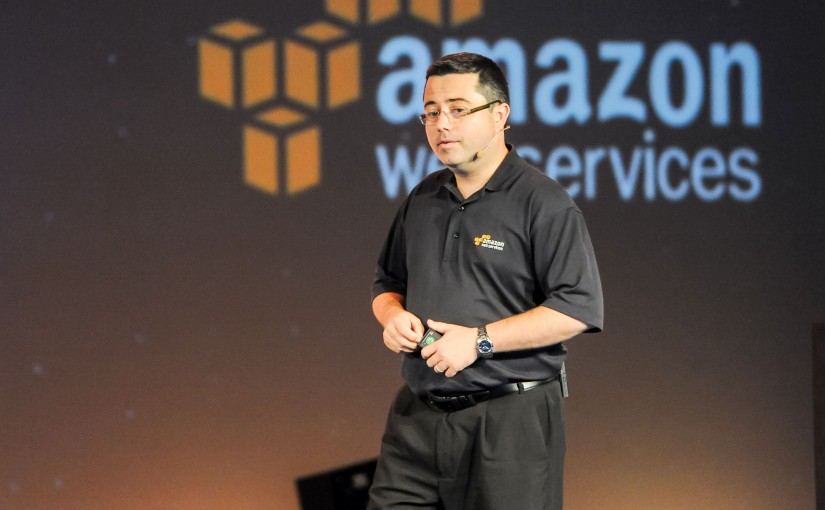It’s going to be interesting to see how the Gartner Magic Quadrant for Infrastructure as a Service looks when it comes out this later year (assuming around August time again): the gap between the players, and the names that disappear.
2016 saw 5 competitors drop out compared to Gartner’s 2015 edition, and now more recently Cisco’s $1B investment in Intercloud seems to have ended; however they’ve now purchased AppDynamics who have been pushing very heavily into the cloud, especially around the microservices world. It’s interesting to see the the players shuffle around:
| Year | Count | Differences to previous year |
|---|---|---|
| 2013 | 15 | |
| 2014 | 15 | Merged IBM + Softlayer, -Tier3, -Savis, +VMWare, +Google, +CenturyLink |
| 2015 | 15 | -GoGrid, -HP, +NTT, +Interoute |
| 2016 | 10 | -Joyent, -DimensionData, -Verizon, -CSC, -Interoute |
Meanwhile at AWS, services continued to innovate, reliably and without any major interruptions. May 2015 saw VPC S3 Endpoints launched, permitting private interconnect between VPCs and S3 service, and there’s been promises of more of this to follow. Re:Invent 2016 saw enhanced distributed account controls with AWS Organisations being announced (only in preview, so subject to change), enhancing the corporate controls in a multi-AWS-account set-up.
AWS did open up four additional Regions in 2016 as promised — Ohio, Canada, London, and India. The footprint of its Edge Locations also expanded — although some of these were additional Edges in the same cities (at different interconnect/peering providers). That’s OK; as the Edges can be turned on and off transparently around maintenance windows, so having multiple Edges in a location may indicate how important this location is.
I’ve found it particularly interesting to see CloudFront move from a flat network of Points of Presence (POPs), to a two-tier caching model with “Regional Edges” servicing requests from “Global Edges”. As CloudFront has spread wider into more locations, there’s an increase in the number of origin requests (misses) made to your origin service, which even with modest TTLs on objects can still be an overwhelming volume of traffic.
From a networking perspective, the availability of IPv6 on Service Endpoints, and now within the VPC is also a sign of evolution. These EC2 evolutions have happened in the past — perhaps not so noticeable:
- from 32 bit to 64 bit VMs
- from Para-Virtualisation (PVM) to Hardware-assisted Vitalisation (HVM) for EC2
- to newer generations of Instance types (helped by an improved pricing point)
And now we see the start of the move from IPv4 to IPv6. It will take a few years, but we’re standing at the edge of massive change. Yet another migration. Only yesterday have we seen the launch of IPv6 for ELB within VPC – something that used to exist for ELB in what is now called “Classic” (all customer shared networking EC2), and today IPv6 within the VPC in all existing Regions (from what was just US-East-2 at launch; which in itself was interesting to see Ohio uses as a canary for the new feature deployment instead of the traditional US-East-1).
For the Debian the EC2 images that I help maintain, we started to support the Elastic Network Adaptor (ENA) at the end of 2016 after I attended the first Debian Cloud Sprint in Seattle – with thanks to Marcin Kulisz for his assistance. For those not familiar, Debian is a 23 year old non-profit, open-source operating system, which underlies much of the modern Linux ecosystem. I’ve been participating since the late 1990s, and a member of the project since 2000 (18 years now). Today I help maintain the Debian AMIs on EC2 for (at least) tens of thousands of AWS customers (may be much higher).
Debian has been selected to be one of the options of operating system in AWS’s new LightSail product: point-and-click VPS that neatly wraps up the details of VPC, Security Groups and storage into a simple model. This brings the beauty of Debian to even more people, taking away the long-held myth that Linux is hard.
What’s in store for 2017
For Debian: In 2017 we’ll move to make the images even more transparent to consumers than they are now with the help of the very talented maintainer of FAI for the last 20 years or so, Mr Thomas Lange (whom I have had the pleasure of knowing for many of those years since we met at DebConf 1). Marcin Kulisz, Anders Ingemann and others have played a major part in this, and of course, the other 800+ Debian Developers world-wide, and of course the contributors who report bugs, review code and help ensure that Debian remains as transparent as possible and true to its goals.
For the AWS platform, storage pricing continues to drop; and while it took a while to get the cents-per-GB-per-month, I’m sure we’ll see cents-per-TB-per-month not too long from now. Others say Cloud storage will be “free” (little “f”), but I just think the order of magnitude for charging will change. Compute edges down in price too; new instance types will come, and those who architect (and automate) their deployments well (CloudFormation, Auto-scale and Launch Configurations) can and will easily adopt them.
Status Quo: All Change
What’s become clear is that for any cloud deployment, there is constant change and maintenance in order to be able to take advantage of improvements to the platform over time. Be that re-deploying your app servres with new operating system patches, modifying VPC architectures (Endpoints, NAT GW, IPv6), etc. I guess the main things these days is to be pretty comfortable with a quote from Heraclitus (535-475 BC): “Change is the only constant in life“.
Meanwhile, there’s another whole story around my work that’s been very satisfying and exciting, but that’s a story for another day…
If you’re interested in AWS and Security, then please check out my training at https://nephology.net.au/, where in a 2 day in-person class we cover above and beyond the AWS courses to ensure you have the knowledge and are prepared for the agile world of running and securing environments in the AWS Cloud.


